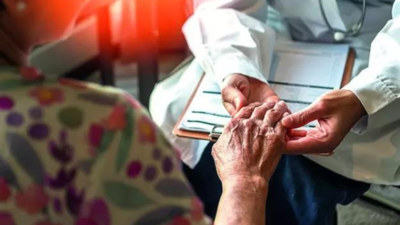Pune: alerts of three Pune hospitals to local authorities last Monday on a higher occurrence than usual of Guillain-Barre syndrome (GBS), a rare but treatable autoimmune disease, exploded in an unprecedented cluster of 73 Case by Friday – Almost Trambling in four days from the first 26 cases which caused an alarm. No death induced by the GBS has been reported. Although the GBS is known to occur in communities, large hospitals generally admit 1-2 cases per month.
Survey
What is most concerned with you in the epidemic of Guillain-Barré syndrome in Pune?
Fourteen of the patients hospitalized in last week were on the support of the fan, because the maharashtra health authorities began door to door investigations, in search of signs of infection and increased alarcation on The GBS. Officials said municipal and district health workers interviewed around 7,200 houses in two days.
Experts said that Campylobacter Jejuni pathogenic bacteria were a trigger known for the GBS, in which the patient’s immune system attacks the nerves. The recent pathogen detection in the samples of stools of several hospitals adds to evidence connecting these bacteria to the epidemic.
Propagation concerns have deepened with the reports of an infant and a toddler among the new cases. Health experts and doctors suspect that the cluster was formed on January 9, the first patient to be admitted to be an eight -year -old boy.
The Central Surveillance Unit of the Ministry of Health of the Union (CSU) has read the increase GBS case in Pune And decided to send a team of doctors to help local authorities. Health establishments, including the Sassoon hospital, are full of injectable injectables and drugs necessary to combat the epidemic. The hospital treats 16 patients with GBS.
Of the 73 gbs reported until Friday, 44 are in Pune Rural, 11 in the Pune Corporation region and 15 in the Corporation Corporation Pimpri-Chinchwad belt. The largest number of patients come from Kirkitwadi (14), DSK Vishwa (8), the city of Nanded (7) and Khadakwasala (6). Three patients have less than five, 18 between six and 15 and seven above 60.
Dr. Babita Kamalapurkar, joint director of the epidemiology department, informed the CSU on patient profiles. She said the surveyors told people that the symptoms to watch were a numbness of the members and prolonged diarrhea.



